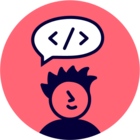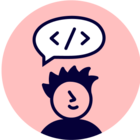I started following the new version of the Miro SDK at the start of this year. It seemed promising and was a good redesign, more streamlined and concise than the existing one.
To my surprise version 2 of the API was released already this spring and version 1 was deprecated. The surprise comes from the fact that V2 is missing core functionality being in V1:
- User events (a small subset of the events in V1 are lately introduced to V2)
- Line drawing
Other important functionality also missing are:
- Emoji (which probably can be replaced by Image, but this is inconvenient and costly)
- Metadata (which was destroyed and only partly fixed in V1)
There is a roadmap page for planned(?) functionality. The page does not contain any commitments nor has it any plan for implementation. No items of the “feature request” tab has gone to “in progress” since I started following it.
I am working on an application for factory optimization using Miro as the user interface. I cannot convert to V2 until line drawing and proper user events are implemented. But, Miro gives me no roadmap of planned functionality, and no date for when V1 dies.
Am I the only person out the feeling abandoned by Miro and has started looking for an alternative?




